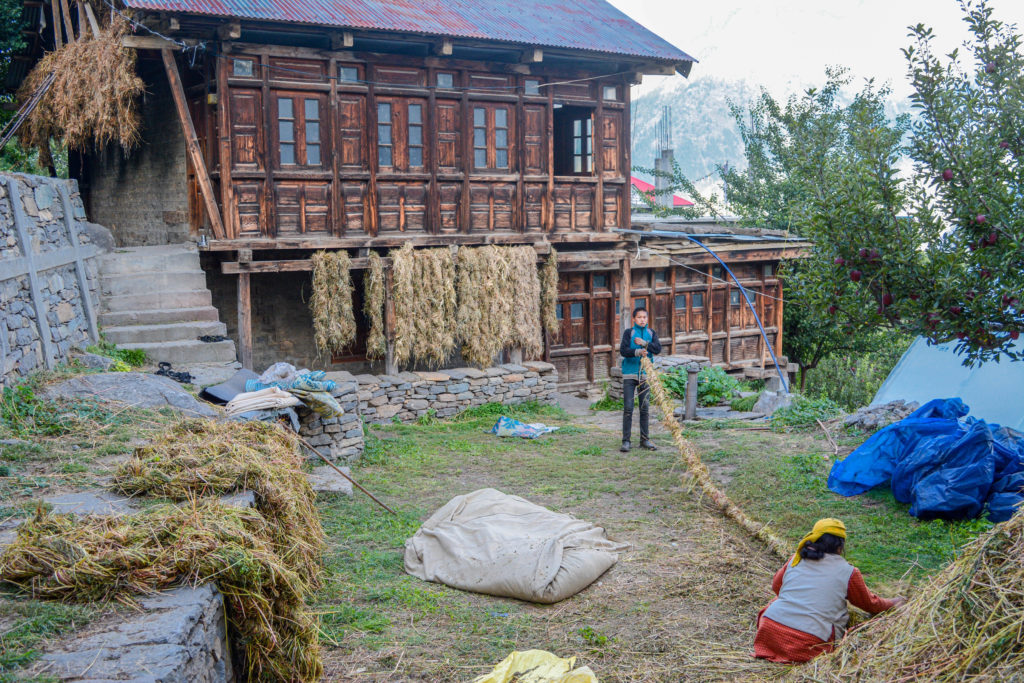
“That’s Anurag over there, and his brother Anuraj,” Kusum said, pointing to her two husbands and smiling proudly. “We have a baby between us.”
I greeted the young men and praised the happy baby, no longer surprised by a form of marriage that most of the world might view as unorthodox. In this remote corner of the Indian Himalaya where Kusum lives, however, women have traditionally married not one but two or more brothers in what is a globally uncommon form of marriage—fraternal polyandry. Polyandry, or “common marriage,” as it is referred to in Kinnaur, has been practiced here for generations. It has served as an adaptive measure to mitigate both the economic and social risks of living in a severe and unpredictable landscape with limited resources such as arable land. But as the landscape becomes even more unpredictable and the land less arable because of the warming climate, this centuries-old tradition is fast disappearing.
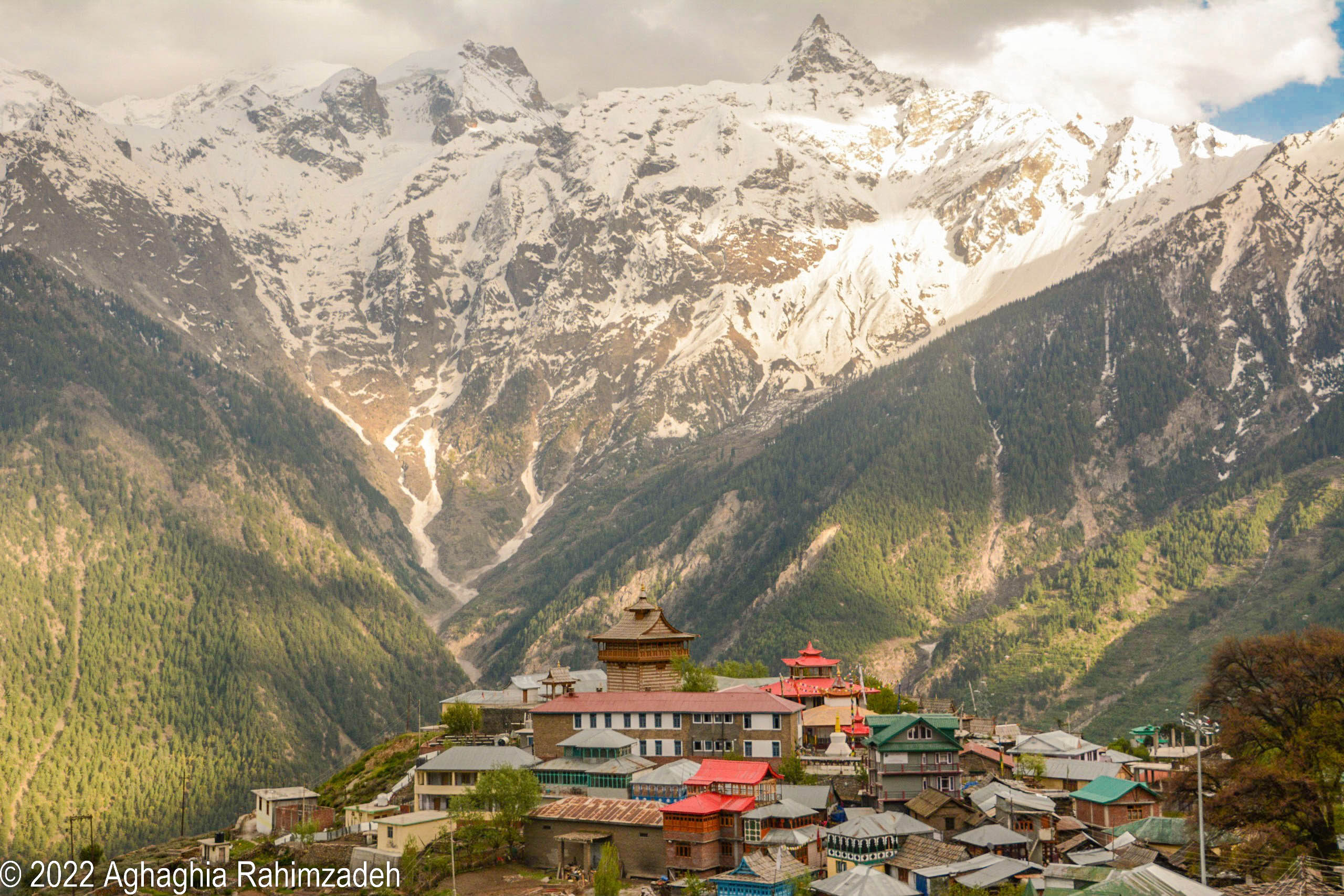
The smell of burning wood from traditional woodstoves mixed with the pungent aroma of native deodar cedar needles and impregnated the air with a jamboree of scents. Kusum and her younger co-husband were busy handwashing a large pile of laundry using several buckets filled with cold water that streamed out of a narrow plastic pipe. Families took advantage of the sunshine, washing their clothes and drying damp blankets and carpets in the warm April sun. A shepherd and his flock passed close by, the goat’s bleating cries and the tinkle of their bells ringing in the spring air. Far away, a faint high-pitched cry of a Golden Himalayan Eagle echoed above. The snow-melting valley was leisurely reclaiming life.
“Actually, this was a love marriage at first,” Kusum said shyly. “I was in love with Anurag,” she smiled, stealing a quick glance at him. A slender young woman with a long, thick braid hanging down her back, Kusum seemed much older than her 23 years. “We were planning a love marriage, but then Anuraj also joined in.” Pointing to her older co-husband, who was shyly looking our way, she continued. “The entire family agreed that we should be in common marriage, but mostly, the three of us decided together.” She hung a dripping bright-colored traditional Kinnauri shawl on the line near a pile of damp firewood, where it steamed as if to give up its winter persona. “We haven’t had any conflict and we’re all happy,” she assured me with a smile.
Anurag, the younger co-husband, was a slim young man of 22 with worn clothing, more an indication of his hard work than any deprivation. His sharp mind and detailed knowledge of local matters were a testament to his involvement with household affairs and the family’s apple orchards. In contrast, his 25-year-old brother, Anuraj, was a quiet young man with clean-cut urban-styled clothing, his jet black hair stylishly combed back. He hoped to secure a job that would position him outside of Kinnaur, preferably as a government employee.
At the time I met Kusum and her two co-husbands in 2013, I had been living in the village of Kalpa—a small village of about 1,500 people in the tribal District of Kinnaur in the Trans Himalaya—where I was conducting my Ph.D. fieldwork documenting the social and environmental repercussions of the region’s booming apple economy. Although I was able to carry on basic conversations in Hindi, I hired a research assistant, Nav, to help with interviews to avoid misunderstanding and to capture nuances.
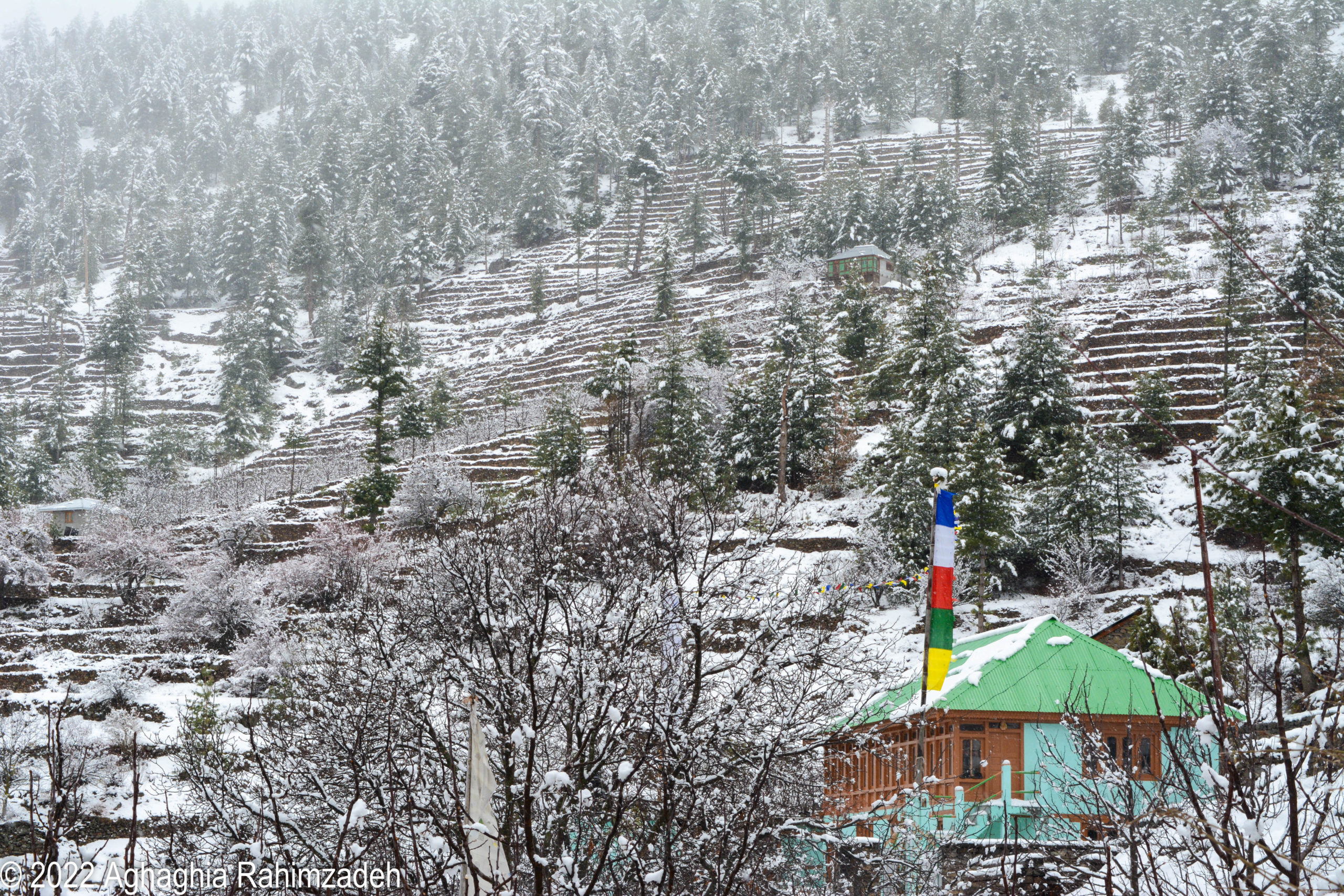
I was curious about how the tribal Kinnauri cultural practice of fraternal polyandry was tied to environmental constraints and to people’s relationship with the land. In environmentally precarious regions of Tibet, Nepal and other parts of Western Himalaya, where fertile land is scarce, polyandry has long served as a strategy for families to survive the economic vulnerability of their risky environments and hold onto their limited land over the generations.
It was here that Nav and I had met Kusum and her two husbands. We were bundled up in the courtyard of a traditional house, the remnants of a heavy winter still in the chilly morning air. Ingeniously terraced apple orchards extending high up the steep slopes of the awe-inspiring snowclad mountains were awakening from their long winter dormancy, their delicate pink buds sprouting bravely. Villages, shrouded in colorful prayer flags, were scattered across the landscape in the shadow of the prodigious Kinner Kailash Mountain Range, its highest peak soaring at 6,050 meters. Primeval glaciers slithered down the folds of the giant mountains like white velvet sheets and shimmered in the dancing light. Now in the process of vanishing, their length no longer stretched as far as it once had not long ago, and their size was now miniscule in comparison.
Most people are familiar with the term polygamy—the practice of marrying more than one wife or husband at the same time. Polygyny—when a man marries several wives simultaneously—is often disparaged as a patriarchal arrangement that privileges men, yet polygyny may serve several functions, many of which benefit women. In regions where there are few men due to war or work migration, for example, polygyny provides a way for all women to have the support of a husband, while enabling them to share their childcare and domestic responsibilities. Polygyny also increases the population when famine, disease or war have reduced birth rates, since one man can impregnate multiple women. While less frequent, however, polyandry—a woman with multiple husbands—has long been a curiosity to anthropologists as this form of marriage is quite rare.
In fraternal polyandry, the most common form of polyandry, one woman marries a set of brothers and takes up residence with her husbands’ family, adopting their lineage. Families are thus able to retain their small parcels of ancestral land instead of dividing the land between male siblings and each of their individual households.
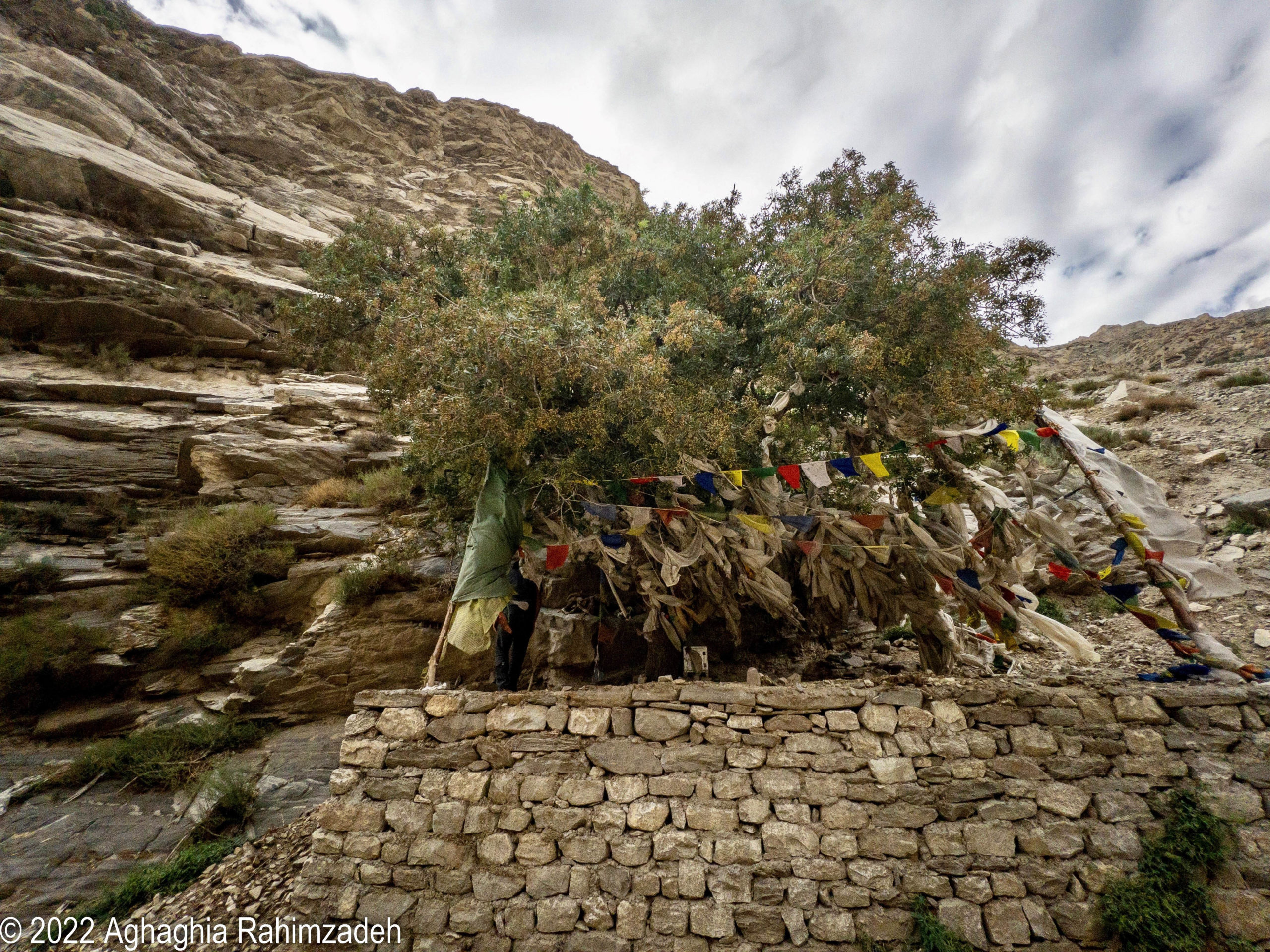
When I first learned about polyandry, my mind was flooded with questions and preconceived judgments, some of which would turn out to be incorrect. My Western notion of marriage initially prevented me from seeing this cultural practice with an open mind. Like many Westerners, I presumed polyandry disadvantaged women by compelling them to be sexually receptive to numerous men and bearing many more children than they would if each woman had only one husband. I also believed multiple husbands would intensify a woman’s workload because she would have to meet each of the co-husband’s demands and care for all the children.
Polyandry and Economic Security
With each passing day I lived in Kinnaur, however, I began to understand that this cultural practice has been both functional in everyday life and viable for long-term survival. Rather than disempowering women, the practical effects of polyandry provide women economic security while it preserves family land holdings. Mountain environments. with their high elevation, seasonal hazards and limited agricultural land. encumber people with risk and uncertainty. Polyandry is one way mountain peoples have adapted to their environment, because it provides a safety net in case one livelihood activity fails or a husband dies. Polyandry reduces the possibility of becoming a widow or a fatherless child, both of which significantly increase the likelihood of a woman falling into poverty. When a polyandrous wife loses a husband, she still has other co-husbands caring for her and her children. The practice offers a means of protection for women whose economic security has traditionally depended on their husbands.
But, if a woman marries multiple men, what happens to the excess women? Traditionally in Kinnaur, unmarried women were an asset to their families because of their added labor. In other cases, women joined monasteries and became Buddhist nuns. Consequently, polyandry was a workable arrangement for this population.
But outside influence has impacted the area because tourism, the internet and media have begun to come to Kinnaur, modeling different lifestyles for this remote mountain region. Now, because outside influences have glamorized nuclear families, more young couples prefer monogamy. Although the practice is declining, many Kinnauris still hold polyandry in high regard, and there are still many such households like Kusum’s. It’s unclear, however, how much longer these households will remain central to Kinnauri culture.

As I listened to this young polyandrous family talk about their lives, I was struck by how sincerely they described the comfort their marriage provided them.
Kusum’s mother-in-law joined our conversation. “We decided on common marriage for our sons because we have very little land.”
“We didn’t want to divide our land,” the older brother clarified.
This was a sentiment I had witnessed all over Kinnaur. As more and more monogamous nuclear families are formed, families have to split what little arable land they own, which makes them potentially more vulnerable to environmental and economic shocks. These new patterns of change will have consequences for the local economy of the region and for future land-based cash crop production.
Kinnauris’ age-old relationship with the land is accordingly changing. In some cases, as their parcels become too small to produce a viable harvest, people’s overall connection to the land may be eroding. Three years earlier, the father of the two young men had divided his ancestral land that he owned jointly with his own three brothers. After partition, each of the four older male siblings received about 1.6 acres, a small piece of land that falls under the category of marginal landholders in the state of Himachal Pradesh.
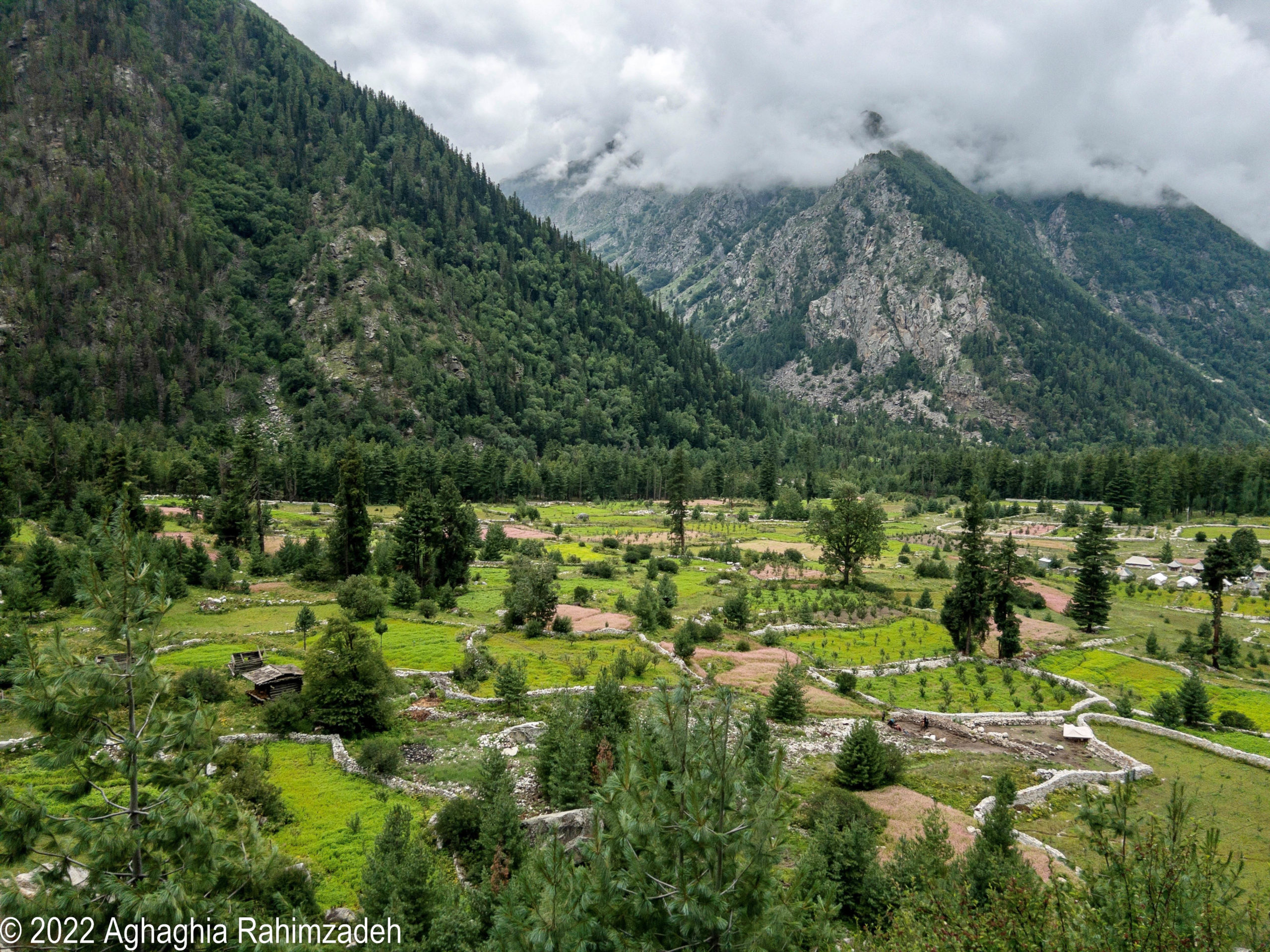
“If we had chosen single marriages, we would each receive 0.8 acres,” the younger brother added. “How can we support our individual families on that?” Shaking his head, he continued, “Our children would have nothing to grow on.” The brothers maintained their larger plot by marrying one woman jointly, as their ancestors had done for generations.
“Being in polyandry benefits us because our family will remain united, which is also good for our children’s safety,” Kusum carried on confidently.
Traditionally, polyandry has functioned with each of the co-husbands assuming responsibility for a different source of livelihood. Thus, between Anuraj’s career with the government and his brother’s management of the land, the family is fortified with two incomes and greater economic security.
Prior to India’s Independence in 1947 and before the introduction of a cash economy, Kinnauris undertook multiple livelihood activities. These included trade and subsistence agro-pastoralism, practices also common to other mountainous regions where the arid landscape prevents the possibility of fully depending on agriculture. While generally the first-born co-husband remained in the village as the householder, the rest of the co-husbands rotated in and out of the house, facilitating a manageable workload for the wife.
In these arrangements, the householder co-husband would look after domestic activities and the family’s small plots of land where they grew traditional subsistence crops. Another co-husband would assume responsibility for trade and might be gone for months at a time, crossing treacherous high mountain passes with animal caravans into Tibet to barter for wool, salt and goats. He would trade those items for essential goods like rice, cotton and sugar from the plains. A third co-husband might be responsible for grazing the family’s animals in faraway pasturelands, and he would also be gone for long stretches. In some contemporary polyandrous households, as with Kusum’s, working as a civil servant outside of Kinnaur has become a new occupation for one of the co-husbands.

Polyandrous families benefited from their diverse natural environment through cooperation and interdependence. Because of the co-husbands’ combined income, such families are generally considered affluent. In the past, the higher social status of polyandrous families also provided them greater political power in the village. Although fraternal polyandry is still embedded in a patriarchal system, women in polyandrous families are considered to have greater prestige and power than those in monogamous families. Polyandrous wives have numerous sources of income and support for their households, enjoying a higher standard of living. The family is devoid of one single patriarch and the wife is generally at the heart of the household unit.
Another factor threatens the economic future of families as they become smaller with the decline of polyandry A new generation, though more educated, is faced with the looming threat of climate change. According to many climate scientists, high-altitude regions such as Kinnaur are among the first to experience the impacts of a changing climate. Apple orchards, the mainstay of the Kinnauri economy, are already suffering the consequences of rising temperatures. Extreme weather events causing landslides and floods destroy limited fertile land.
Today, however, the apple economy, introduced in the 1950s, increasingly provides Kinnauri women with better access to higher education, more opportunities and greater independence, reducing their need for the safety net of multiple husbands. But polyandry is declining in favor of nuclear families as the parallel force of outside concepts of family and marriage take hold. While women may lose the prestige that comes with polyandry, they gain in ability to attend to their own needs and aspirations, making polyandry less important as a source of security. If this trend toward monogamy continues, however, women may need to have direct rights to property. For Kusum and her husbands, however, polyandry has enabled them to live a comfortable life despite their small parcel of land.
Without the safety net that polyandry traditionally provided, the economic security of Kinnauris is heightened. Monogamous marriages fail to provide the unique needs of this culture that depends so critically on a marginal landscape. While many Kinnauris are economically sound for now, every year with water scarcity brings them closer to jeopardy. As we have seen, families like Kusum’s may be better positioned to withstand the brutal blows of climate change.
Polyandry and Domestic Stability
Environmental vulnerability isn’t the only problem polyandry mitigates, however. For some, polyandry limits conflict in the home, rather than increasing it.
“Another advantage of polyandry is that if Anuraj was in an individual marriage, then there would be two daughters-in-law in this house.” Kusum laughed and looked amiably at her husbands’ mother. “Then our mother-in-law would keep comparing one wife to the other.” She picked up the last article of clothing and neatly pinned it on the line, its water drip irrigating the brilliant yellow lilies that generously carpeted the ground.
Nav nodded his head and took a sip of his tea before he suddenly spoke.
“I’m a child of common marriage myself,” Nav surprised me by announcing. I turned toward my research assistant. In our work together, he had not mentioned this part of his background. “But I’m curious about one thing,” he glanced at me mischievously. “How do you decide who sleeps with your wife?”
After a moment of awkward silence, Anurag replied, “The woman stays in the kitchen with the baby.” The kitchen with the traditional woodstove is the central part of a Kinnauri home. “After we finish dinner, one of us leaves to sleep somewhere else, and the other husband stays with Kusum.”
For most Westerners, any form of polygamy suggests jealousy, but as Anurag’s answer suggested, such conflicts may not be as great as Westerners might presume. In fact, in some ways, polyandry may minimize jealousy, as Kusum noted. Kinnauris believe polyandry works most successfully if brothers make an effort to mitigate jealousy and rivalry. To help ensure they do so, it is equally crucial for the wife not to favor one co-husband over another. Despite my Western-lensed skepticism, by the time I parted, I realized these young people seemed to be managing their polyandrous household well.
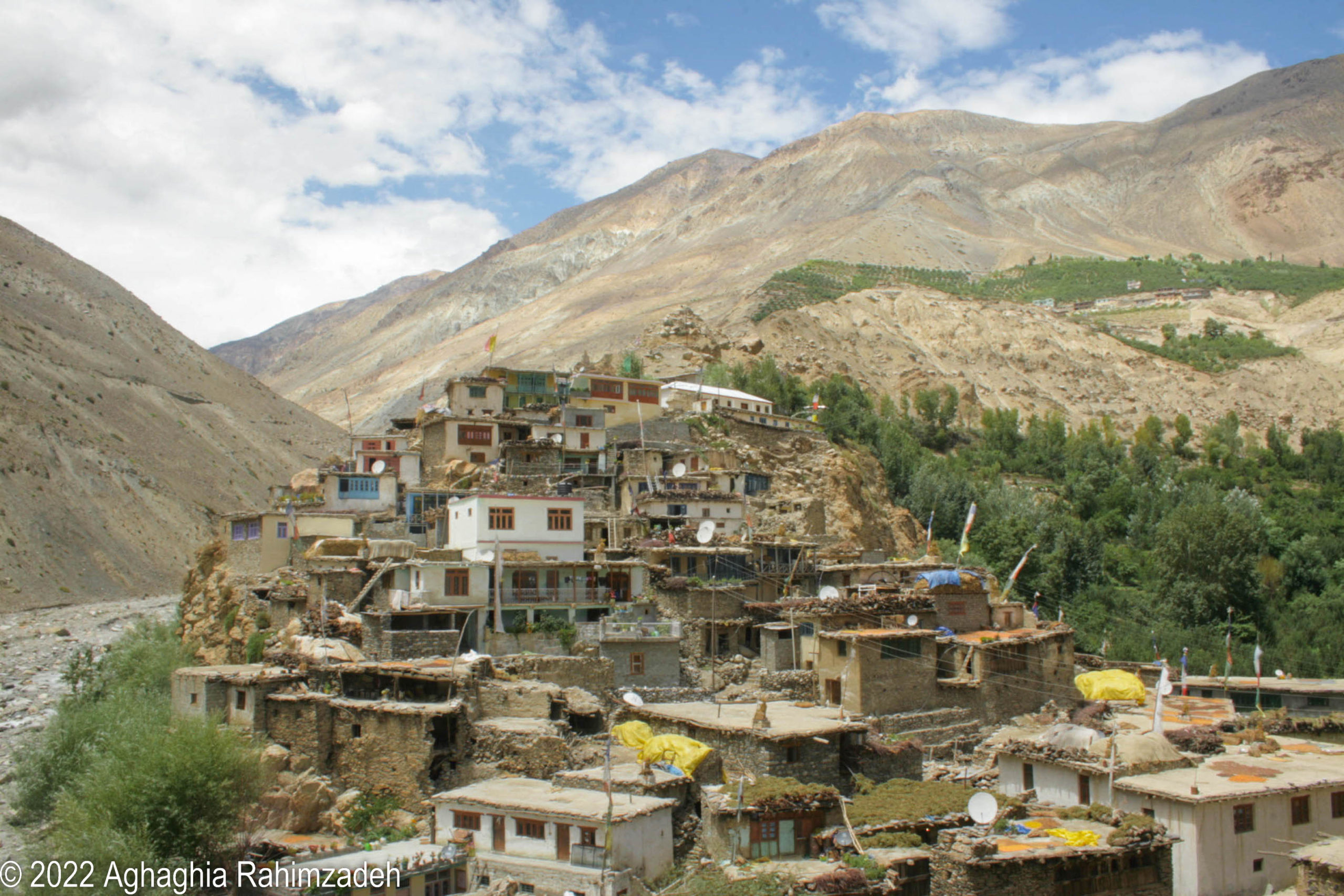
Polyandry is still relatively common in Kinnaur, especially above the tree line closer to the Tibetan border, where adapting to an arid mountainscape has been vital for survival. Curious to know more from Nav’s polyandrous family, I visited his ancestral village, where many polyandrous families reside. We disembarked from the bus and walked a narrow path through the village toward Nav’s father’s house. The budding apple trees were in stark contrast to the fully blooming apricot trees, their exquisite pink blossoms and sweet floral scent offering aromatherapy for the passersby. As we neared Nav’s ancestral home, his father, a renowned carpenter in the village, was crouched on his haunches hand-sawing a piece of plywood in the orchard and waved a hearty greeting to his son.
Nav and I sat near the traditional woodstove in the small kitchen sipping tea and eating recently harvested walnuts. The Sutlej River raged on the valley floor thousands of feet below us, its roaring hum ricocheting in the canyon. The aroma of dal in a pressure cooker permeated the room and the sound of children and passersby outside enlivened the atmosphere.
Nav, in his early 30s, lives with his wife and their young daughter in a small apartment in the district’s headquarters. Although raised in a traditional setting, he belongs to a new generation of Kinnauris exposed to modernity through education, the internet and increased commerce outside of Kinnaur. Nav is ambitious and, unlike his fathers and ancestors, he and his brothers are each in monogamous marriages. They are no longer directly linked to the land, reflecting the cultural shift that is slowly becoming common with younger Kinnauris. Instead, Nav has emerged in Kinnaur’s nascent and fast-growing tourism sector and is even shaping it. Paradoxically, he deeply identifies with many aspects of his traditional tribal culture.
“My mother was married to my two fathers,” he recounted. “Both my mother and elder father have passed away.” Depending on the age of their co-fathers, children of polyandrous families refer to their fathers as “younger father” or “elder father.” The co-fathers, too, treat all offspring as their own. “That is one of the benefits of common marriage, I still have a father.” (Unfortunately, Nav’s younger father has also passed away since the time of that interview.)
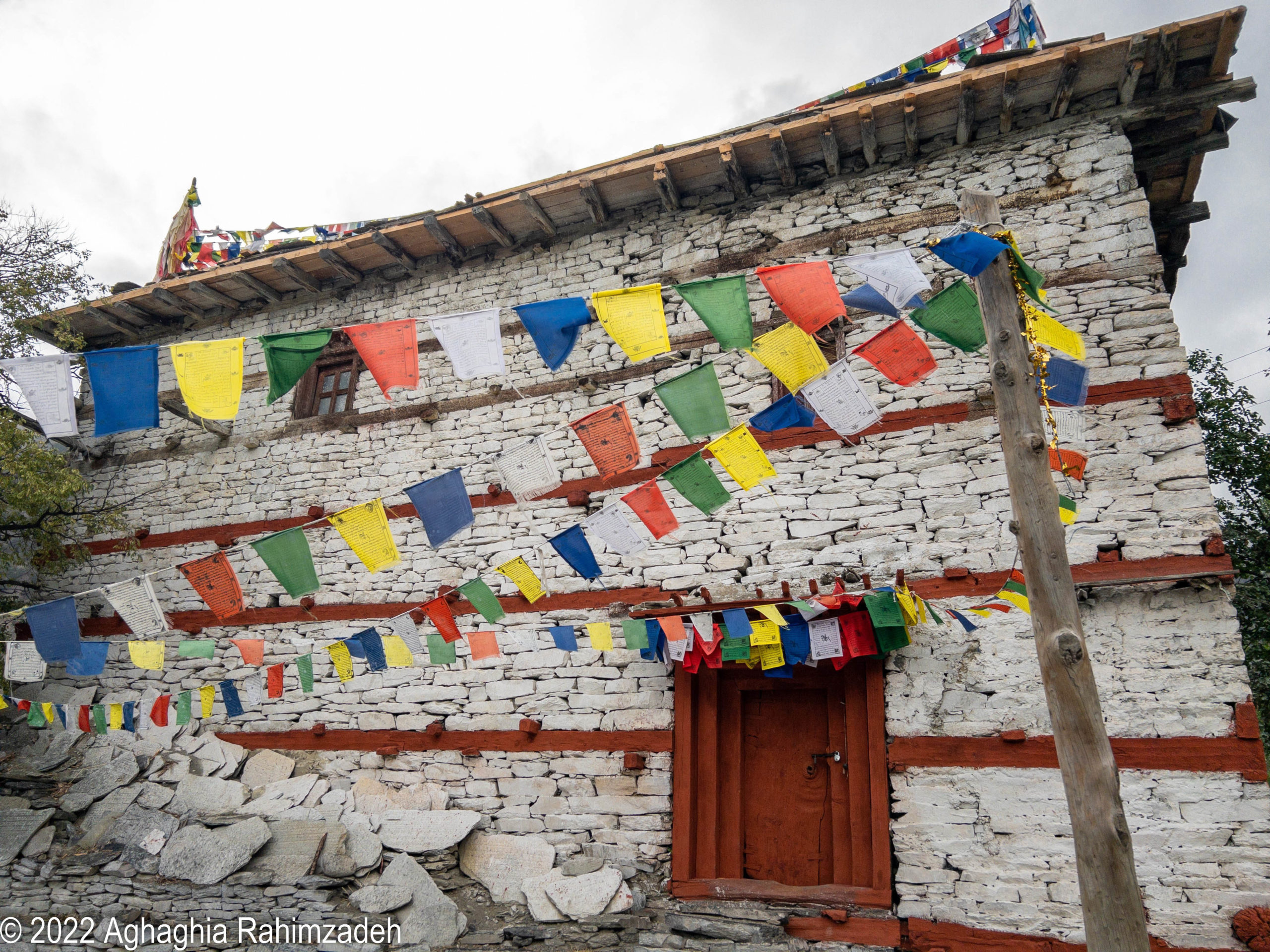
Later that afternoon we visited another multigeneration polyandrous household and spoke to Mr. Singh, his wife Devi Ji, and their 30-year-old daughter-in-law, Anjali, who is in polyandry with two of their sons. The two women showed great interest and actively engaged in discussing their marital practice.
“The marriage was originally between me and the two younger brothers,” the mother, Devi Ji, began. “Mr. Singh is the first-born brother and was away for work for several years. After he returned, he accepted to be in polyandry with us.” Devi Ji, in her early 60s, spoke with ease and conviction. “Then after 10 years, the youngest brother left and started his own family.” Kinnauri polyandry is flexible enough to include variations in which a brother can split off from the original union or another brother can join that union later.
“There was a mutual understanding between all of us after he left, and the children stayed with us. But we see each other regularly,” Mr. Singh added with a peaceful smile.
Devi Ji concurred. “We have four sons between us. Our older son is in a single marriage. The other two have been in polyandry with Anjali for nine years. Our youngest son is unmarried, but he has a choice to join the other two and Anjali in common marriage.”
I asked Anjali if she would have a choice about accepting the younger brother in marriage. “I’m more concerned about the unity of the household, and so I would accept,” she declared self-assuredly. “Initially, I didn’t want to be married to two to three men. But after learning about this family, I accepted,” she said as she smiled and affectionately looked at her in-laws. “Brothers come from the same root and the same thinking. In a joint household with individual marriages there is more separation. But because of common marriage, we are united and all decisions are for one household.”
“There is a proverb which says one can break one stick easily, but it is more difficult to break a bundle of sticks,” Devi Ji added.
As young Kinnauris, both Nav and Anjali were intermediaries between the old and the new, tradition and modernity. As I was eager to hear from the elders, I arranged to meet with my landlord’s 95-year-old father to hear his perspective on Kinnaur’s changing practices.
I proceeded to the back of the old traditional home through a narrow and dark hallway toward a wooden door holding an ancient lock. Hiramoni Ji, Mr. Shyam Saran’s 96-year-old wife and my landlord’s mother, was welcoming. She was jovial and her big smile enhanced the wrinkles outlining her beaming eyes. Her oval-framed eyeglasses suited her time-worn face and reflected a wisdom that only comes through decades of hard work in a difficult terrain. Her thin white braid fell from under her traditional green Kinnauri hat, matching her customary green velvet jacket.
Inside, Mr. Shyam Saran sat on an old burlap sack next to the woodstove pensively smoking tobacco from a traditional hookah. To someone unfamiliar, the stark room might give the deceptive impression of deprivation. To the contrary, we were in the house of one of the largest landowners and most respected people in the village. This legendary man cast the very first vote in India’s first-ever election after the country gained independence from the British.

Hiramoni Ji placed an empty burlap sack next to the woodstove for me before slowly disappearing into the dark to prepare tea. After a few pleasantries, I asked Mr. Shyam Saran to talk about the custom of common marriage, knowing that he and his brothers were in polyandry with Hiramoni Ji. While he and his wife lived with my landlord, one of the husbands lived with their other son, and the third husband had passed away long ago.
“In the olden times, we lived in common families because life was very difficult,” Mr. Shyam Saran paused to puff his hookah. The fire in the woodstove crackled, providing some heat and light in the faintly lit room. “Without common marriage, we would need more children to help.” He was interrupted when his wife appeared with a tray of steaming tea and biscuits. She sat down, insisting I help myself. Mr. Shyam Saran moved his ancient body slowly to take a biscuit, and soaking it in his tea, he placed it in his toothless mouth.
“These days the government tells us about family planning.” He smiled, his eyes beaming. “But we’ve practiced family planning for generations,” he exclaimed. “Polyandry limits the population.” In the past, especially during long winter months when food was scarce, polyandry was a rational response for maintaining a sustainable population level. Mr. Shyam Saran unhurriedly bent his timeworn body forward to push the logs farther into the woodstove, his wrinkled face illuminated momentarily from the glow of the fire. At 95, he was sharp and well informed, clearly recounting dates and events from long ago.
“But this system is changing, and relations are shifting,” he explained. “In the olden times, people were uneducated. We accepted everything systematically, including our customs. Now, young people are following the cultures they see on television and their phones.” Many of the young people who travel outside of Kinnaur for their education feel shame about polyandry when they interact with non-Kinnauris who stigmatize the practice as “backwards.” Mr. Shyam Saran sighed and took a few more puffs from his hookah. “Even some of our own Kinnauri children are now surprised by common marriage and want to know about it.”
I was reminded of a friend’s son, who, like most local children, attends a school outside of Kinnaur, because it is thought to provide higher quality instruction. Returning home several times a year, he seldom came out of the bedroom where he watched television. I thought, too, of another friend from whom I learned about the show Keeping Up with the Kardashians. It was evident that this show shapes the material expectations and ambitions of youth like him who see ostentatious displays of wealth as a benchmark of success.
It is ironic that at a time when Kinnauri families are adopting monogamy, Western cultures are experimenting with gender fluidity and multiple, often serial mates. Even in such an experimental atmosphere, polyandry may appear alien to a Westerner given the common Euro-American tradition of monogamous relationships and belief in the superiority of such practices. Western marital routines, however, require reflection. For example, the high rate of divorce in the United States is incomprehensible for many cultures around the world.
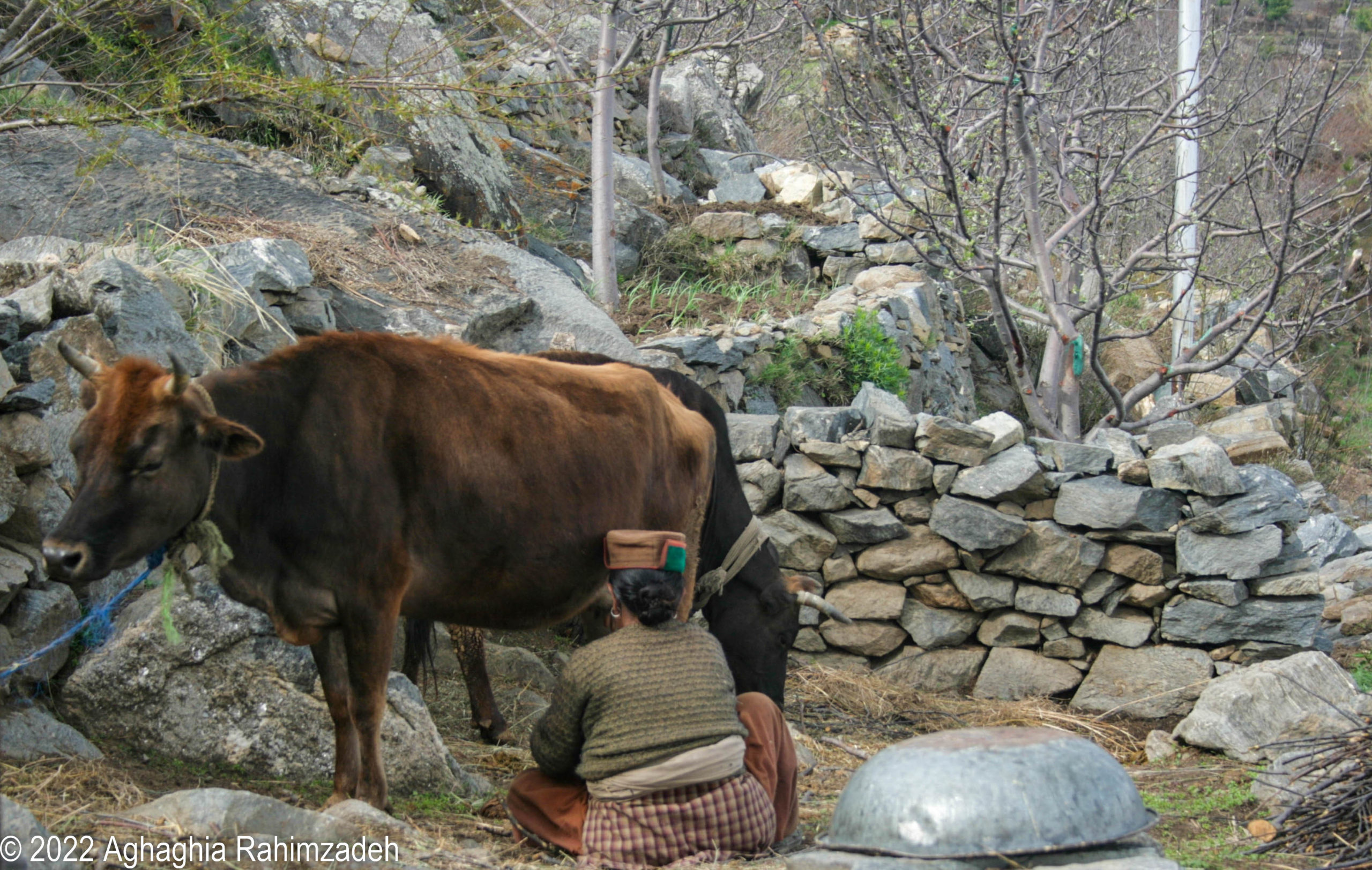
It was late afternoon, the warming sun was hinting at setting behind the peaks and the sound of the cows expecting to be milked wafted plaintively from the cowshed. “In the olden days,” as Kinnauris often put it, when families had more members and the village community networks were stronger, people performed their own labor. With nuclear family arrangements, however, while their lives have become easier, one husband and one wife cannot possibly attend to their children, fields, orchards, animals and personal affairs. Kinnauris now hire migrant laborers for support where once family members cooperatively did the same.
By the time I left, clouds had drifted over the village covering the warmth of the sun. A cold breeze was yet again in the air. Birds chirped their last hullabaloo of the day before taking shelter for the night in the surrounding orchards and forests. The sound of the evening prayers rang from the Buddhist temple speakers, and colorful prayer flags generously dispersed their prayers for the happiness of all beings. The Kinner Kailash massif soared in the sky, its peak submerged in a magical red glow from the last rays of the departing sun.
What will the next phase hold for Kinnaur when climate change continues to adversely affect the apple orchards and families no longer share the labor of their land communally? What will take the place of the safety nets that polyandry provides? What happens when communities lose their ties to each other and the relationship to the land they have depended on for generations? Perhaps they will adopt new cash crops that can be cultivated on small plots. Or perhaps the increased income from tourist accommodations might replace income from their beloved orchards. People may have to move out of Kinnaur to larger towns and seek non-agricultural work such as employment in the service industry or the private sector. Some families have already moved while leasing their lands to migrant laborers.
While polyandry may not work everywhere, in environmentally precarious regions with land scarcity, it functions to mitigate the many risks and costs of living. It is still too early to know, however, whether the practice will disappear altogether or see a resurgence as climate change reaches the far corners of the Himalaya.
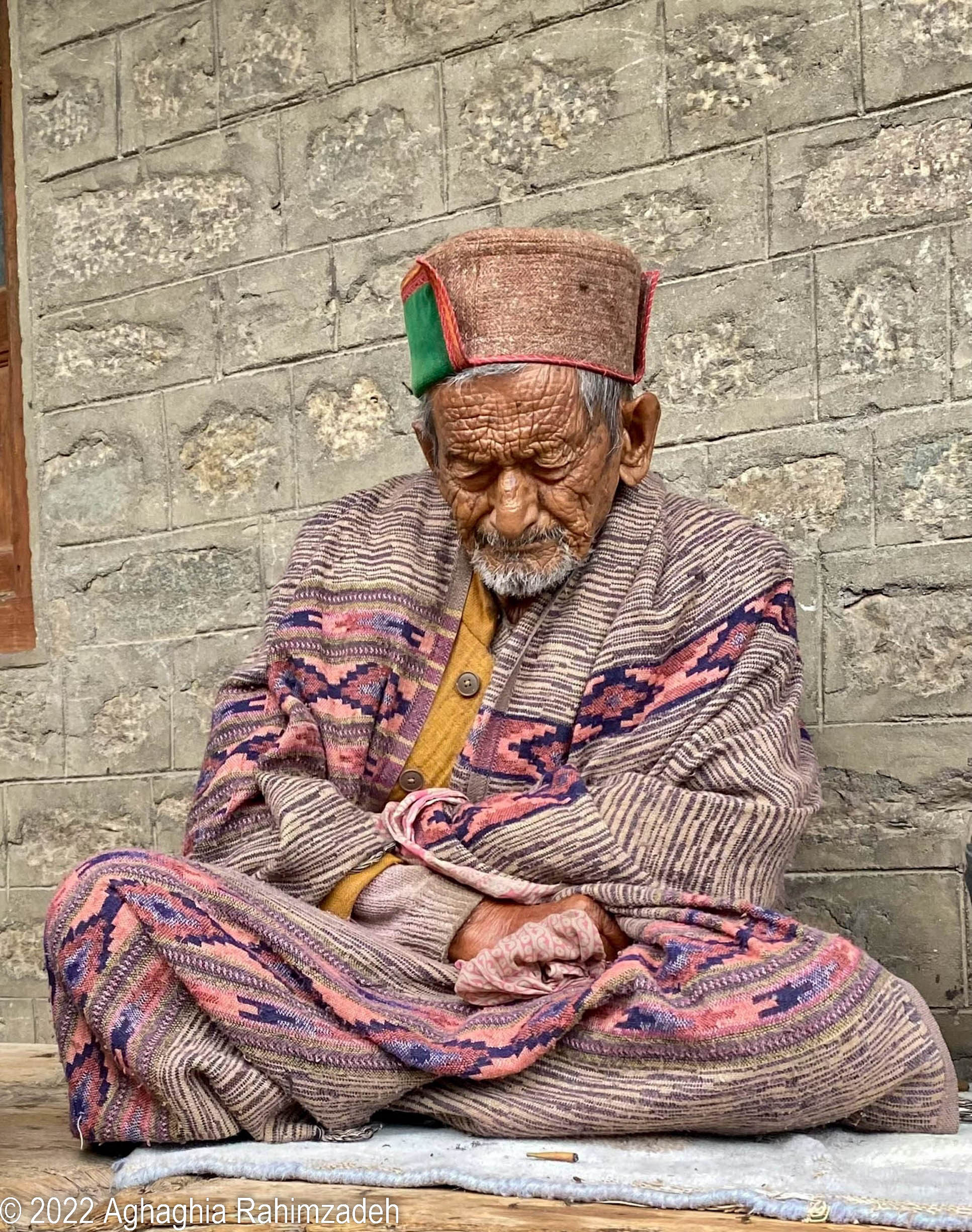
1 Women, however, are barred from owning property under the Kinnauri tribal customary law—something the shift to monogamous marriages has not yet remedied.
Additional information
Notes on contributors
Aghaghia Rahimzadeh is a Fulbright Fellow with a doctorate in environmental science, policy, and management from UC Berkeley. She has spent the last decade conducting research in remote mountain communities in Western Himalaya, investigating the social implications of climate change. As an independent scholar, her current work explores the intersection of climate change, infrastructure development and mass tourism to understand how the region confronts these issues on its resource base. Aghaghia is currently a fellow/scholar advisor at the Black Earth Institute. She also guides educational and cultural immersion tours to the Himalaya. Aghaghia has worked with the UN Development Program and the UN Development Fund for Women in Tajikistan and with the International Union for the Conservation of Nature in Iran. Her publications have appeared in About Place Journal, World Development Perspectives, Land Use Policy, Conservation and Society, Human Ecology, Newfound and Terrain.org.
Notes
1 Youba Raj Luintel, “Agency, Autonomy, and the Shared Sexuality: Gender Relations in Polyandry in Nepal Himalaya,” Contributions to Nepalese Studies 31, no. 1 (2004): 43–83.


